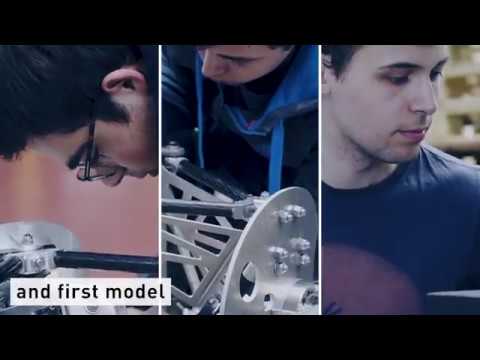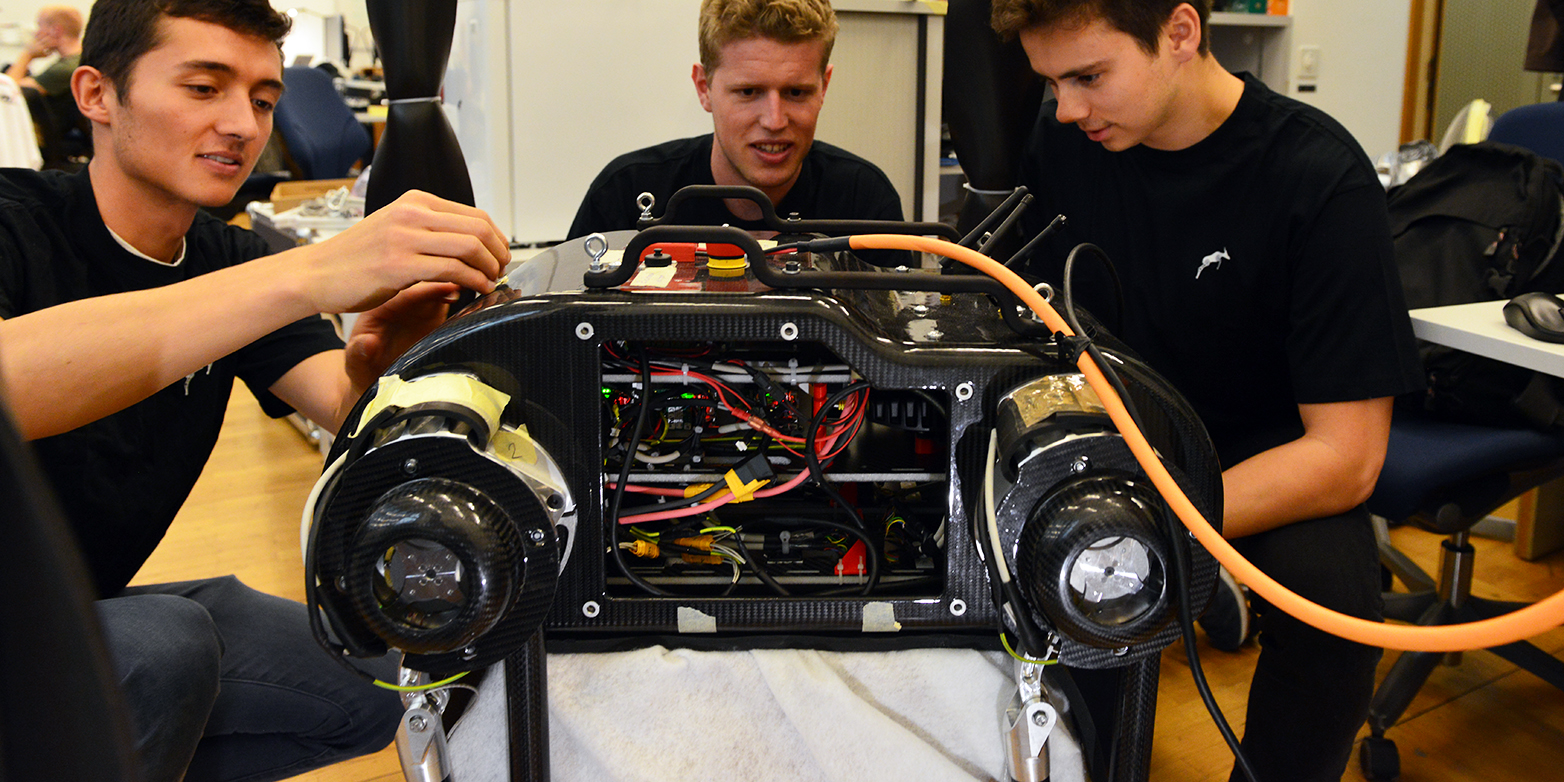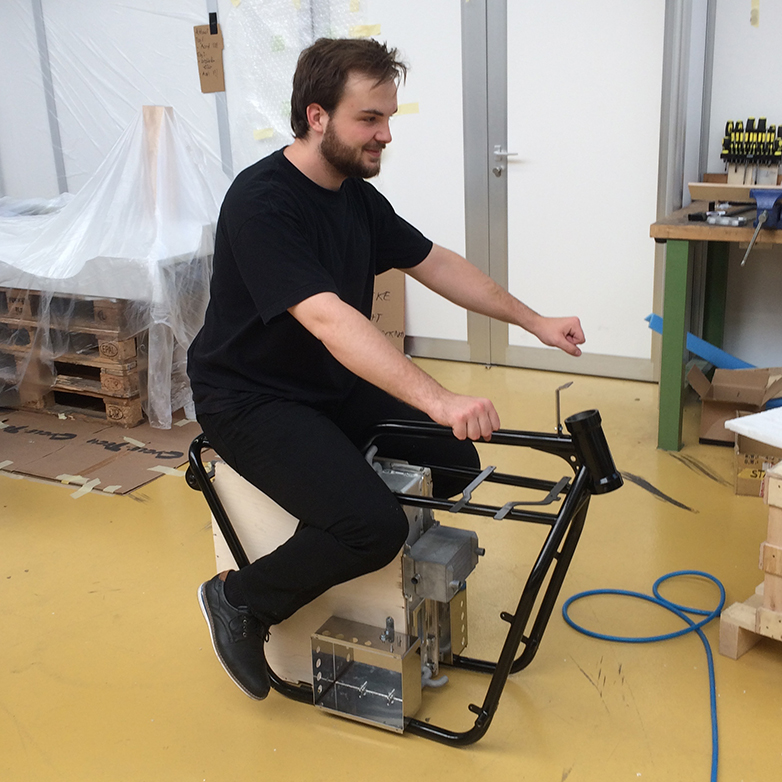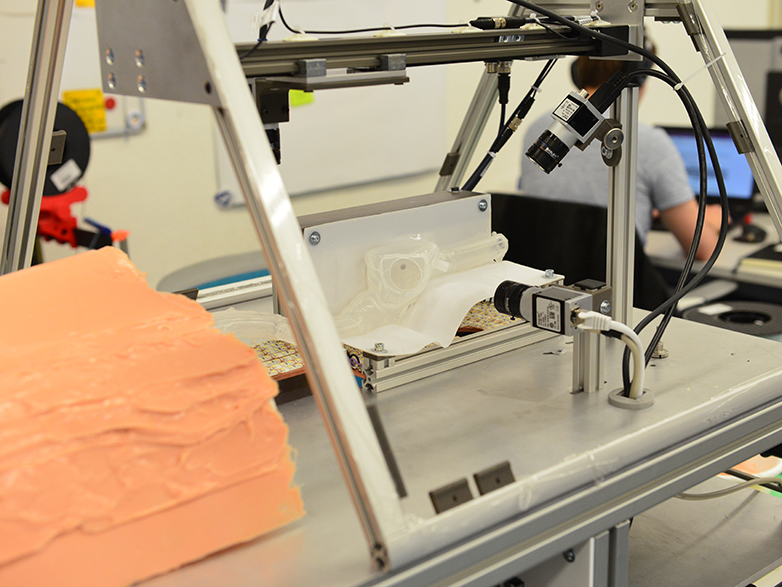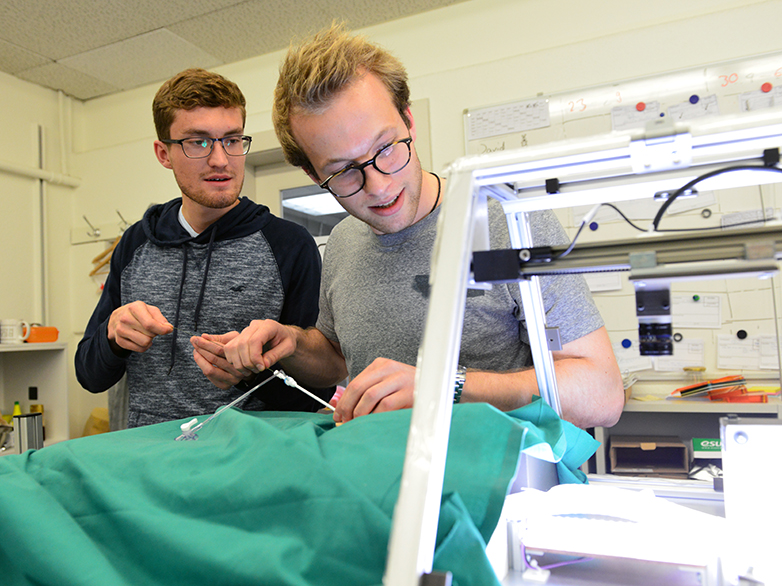Electric motorbikes and jumping robots for distant planets
Some hundred mechanical engineering students working in teams took ideas for new products and developed them from concept to finished product. This year’s focus projects include jumping robots for use in space, medical devices and solutions for tomorrow’s e-mobility.
ETH students’ focus projects count as two semesters of practical experience across all areas of mechanical engineering – from traditional vehicle and engine construction to medical technology and robotics. “It’s an opportunity for us to put our ideas and what we learn in lectures into practice,” says Marco Job, one of 100 or so Bachelor’s students who have spent the past 9 months working on a total of 12 different projects. Focus projects are offered to students in their fifth and sixth semesters by the Department of Mechanical and Process Engineering. Supervised by professors as well as doctoral students and postdocs, the students are tasked with developing their ideas into a finished product. They must also master project and time management, marketing and attracting sponsors.
Developing an electric motorbike
For the Ethec focus project, Job’s team set out to develop a fast and nimble e-motorbike that can cover up to 250 kilometers before it needs to be recharged. It’s worth noting that these students wanted to develop their e-motorbike from scratch, using as few finished components as possible. “I think I know every single component back to front – including the 1,200 battery cells, each of which we have to monitor and program individually,” says team member Samuel Renggli with a grin.
His team has 16 members in all, including two students from the Zurich University of the Arts (ZHdK) and another from the ETH Department of Information Technology and Electrical Engineering (D-ITET). What’s special about the team’s motorbike is that it has a motor on each of the two wheel hubs. The students hope this will provide better acceleration, and they want to recuperate energy at the front wheel when braking.
To succeed in their mammoth task, the students split off into four topic groups, including motor, battery, and software and control technology. “We found that working in different groups meant we were more efficient and less likely to get on each other’s nerves,” says Niklaus Schaffner, “but at the same time, it made it harder to maintain an overview of the project and to know how the others were getting on.”
Combining engineering with medical technology
In addition to specialist knowledge, one of the skills that students must acquire while working on focus projects is communication, both within their teams and across disciplines. This is something Georg Brunner, a member of the Cardex project, also discovered: “Despite working in a relatively small team of six, the things that proved most difficult were communication between people working on different aspects of the project, and finding the best way to divide up the tasks.”
The project, which was about developing a training device for minimally invasive heart operations, called for regular exchanges with specialists from the University Hospital Zurich. “We first had to get a handle on what the surgeons actually needed,” explains Brunner, who spent a long time deliberating whether to study medicine or mechanical engineering. Now Cardex has let him combine the two.
Jumping robots for space
external pageSpace Bokcall_made is another project daring to boldly go where no focus project has gone before. The team came up with a robot for space missions to planets with low gravity. Before the project got under way, their professor gave them just one suggestion: that a jumping robot might be a good idea. “As a team we then had to work out how many legs the robot should have, or if we would be better off going for a robot that rolls,” says Bachelor’s student Radek Zenkl.
To learn more about how things move, one thing the students did was look at animals. After spending a long time at the computer working on different designs, the team decided to go for a four-legged robot, which they then built from almost 500 parts. Each leg has two motors, allowing the robot to either walk normally or – similar to the South African springbok that inspired the project name “Space Bok” – jump using all four legs simultaneously. This means it should be able to deal with obstacles such as rocks on future visits to other planets.
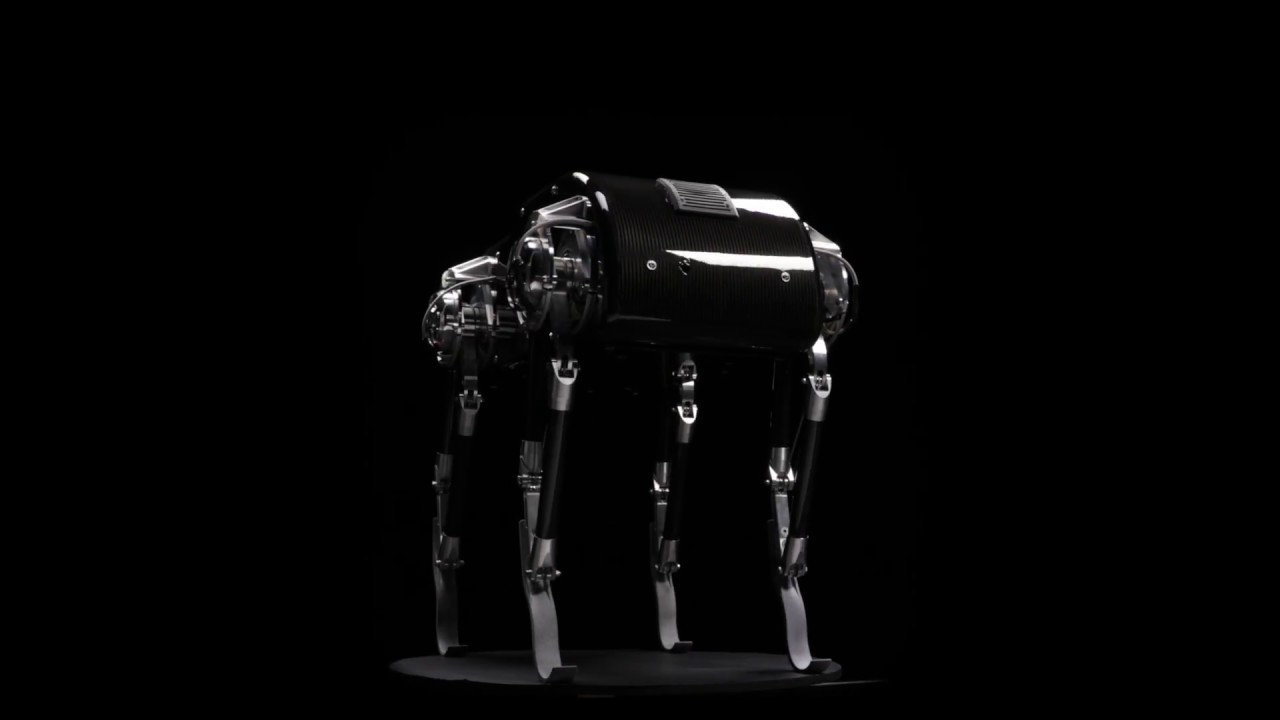
The team has 12 members, including two electrical engineering students from D-ITET and two students from the Zurich University of Applied Sciences (ZHAW). “Having input from the ZHAW students was particularly useful because they have much more experience in hands-on mechanics than we do,” says Bachelor’s student Philip Arm. One of the pivotal experiences for students on focus projects is learning to work by trial and error. “We really get thrown in at the deep end, and it’s up to us to swim and not sink,” says Jan Hinder from the Space Bok team.
Sometimes, getting the job done meant working until 3 a.m., consulting professors and supervisors and visiting the companies the teams managed to recruit as sponsors. But on the whole, all teams tried to master their challenges without outside help wherever possible. “I learned a great deal about being a team player as well as about my own approach to work,” explains Zenkl. Job adds: “It’s so much cooler than I’d expected!”
The other 2017/18 focus projects
Ascento
Development of a robot that can climb stairs. It combines the advantages of wheels with the versatility of legs.
Carbon Factory
Development of a 3D printing system for the additive production of fibre-reinforced plastic components
external pageFormula Student Electriccall_made
Development of the Eiger electric racing car, which is particularly light and can accelerate very well
external pageFterocall_made
Development of a mobile wind energy system in which a carbon aircraft is connected to a generator by a rope
external pageMotoStudentcall_made
Development of a motorcycle with carbon fibre reinforced plastic frame
Multispeed ESC
Development of a turbo compressor with a novel modular system
external pageProbosciscall_made
Development of a trunk-shaped robot for the search for buried victims
external pageSuncar iBullicall_made
Conversion of a Volkswagen T6, whose combustion engine is replaced by an electric motor
external pageSwissloopcall_made
Development of a new hyperloop transport system
Roll-out focus projects
An exhibition of the 12 projects will be on show in the buildings CLA (Glashalle), ML (Turbinenhalle) and LEE (ground floor) in the ETH Zentrum on Tuesday 29 May 2018 from 12 noon to 5.30 p.m. Between 1.30 p.m. and 4 p.m., the students will present their projects in the ML D28 lecture hall.
